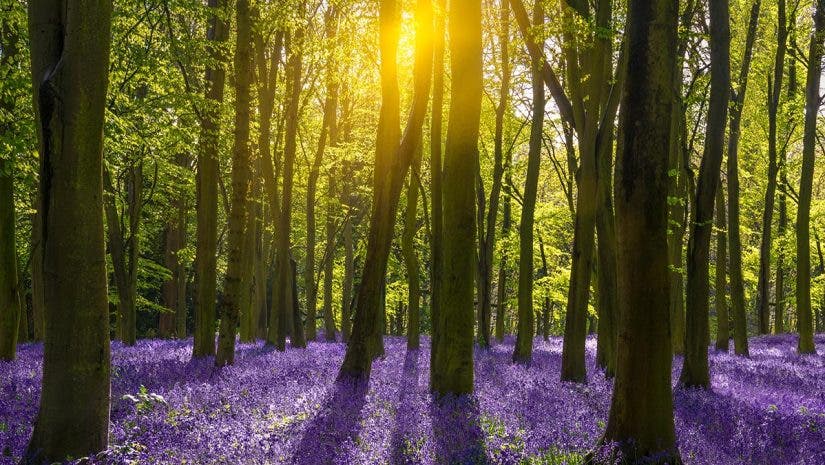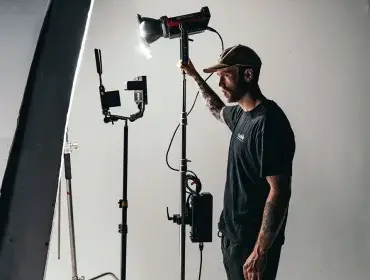As a nature photographer, I often find myself wandering in a forest, looking not for a good shot but for a subject willing to talk to me and allow me to take its picture. Sometimes, it is a tiny insect; other times, it is a family of mushrooms, birds, or wildlife, but almost every time, the forest is eager to tell me its unimaginable stories. This article will cover some of my most time-tested tips for forest photography.
The forest encourages exploration and experimentation with different subject matters. Furthermore, it is a challenging environment for a beginner photographer, testing how well you know your gear, how prepared you are to work in less-than-perfect lighting conditions, and how much attention you pay to composition.
Even though missing the focal point and faulting the exposure are things to prepare for, the main reason for ruined forest photos is the lack of connection with the environment. So, my forest photography tips start with a bonus: be present, mindful, and open to whatever the light and the forest decide to offer you at that moment. The following tips will help you with the technical and composition-related parts of forest photography.
1. Master Exposure
Even on a bright, sunny day, a forest has less light than you imagine. Trees and their foliage create patches of shade and reduce the amount of light that enters your lens. With your camera on a tripod, you can use a pretty slow shutter speed. However, you need to be careful that almost unperceivable wind may move the vegetation or the leaves just enough to result in a blurred image.
Therefore, you should be in control of exposure and camera settings. Don’t rely on the camera’s Auto mode because it may easily get confused by a brighter or darker spot or come up with average settings that ruin your composition.
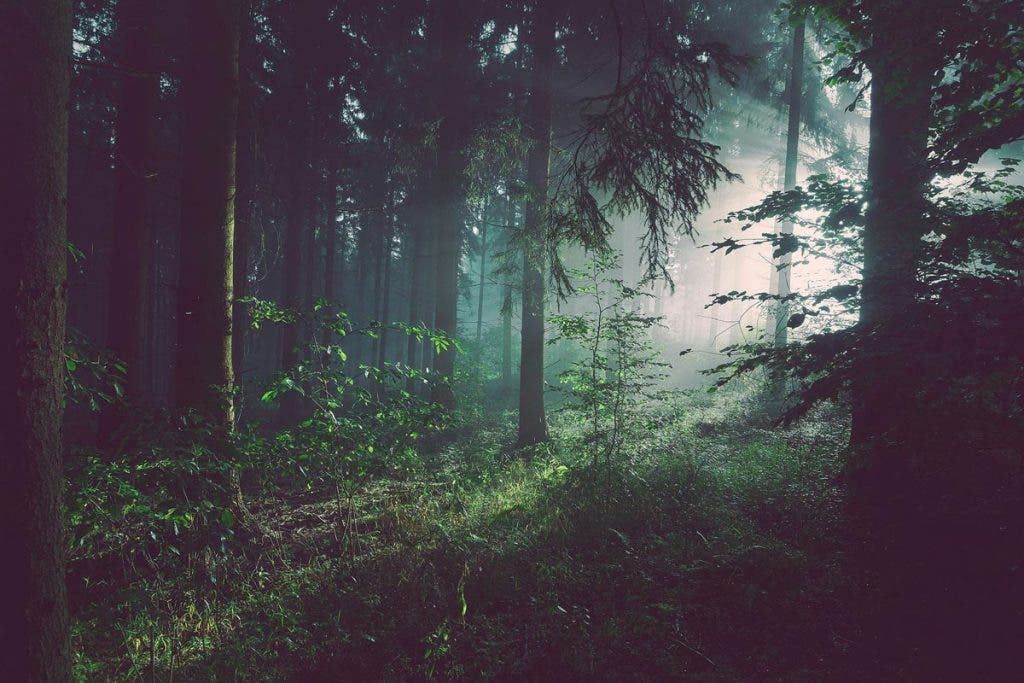
Manual mode should be your first option, and here is why. You can work with both the shutter speed you need to avoid movement and a narrow aperture (large f-number). If you need more light, just increase the ISO. Whenever you go out for forest photography, regardless of the weather, start with the lowest ISO, like ISO 64 or ISO 100. Sometimes, you’ll need to increase the ISO value up to 400. That’s fine, even for a low-end DSLR or mirrorless camera, and it won’t produce the dreadful ISO noise (or at least not an amount you can’t get rid of in post-processing).
A good starting point when doing forest photography using a tripod is a shutter speed of ½ second, f/11 and ISO 100.
2. Shoot in RAW
Speaking of post-processing, if your camera supports shooting in RAW, use it even if it means taking fewer photographs. This is one of those forest photography tips that applies to many other types of photography as well. Indeed, RAW image files take up more storage space on the memory card. Bring spare memory cards if you plan a longer photo session.
The RAW format records all the data the camera is able to acquire. As a result, you will have all the information you need to adjust the white balance and fix possible exposure mistakes in post-processing. It will also produce more accurate colors and give you more freedom to adjust them post-processing.
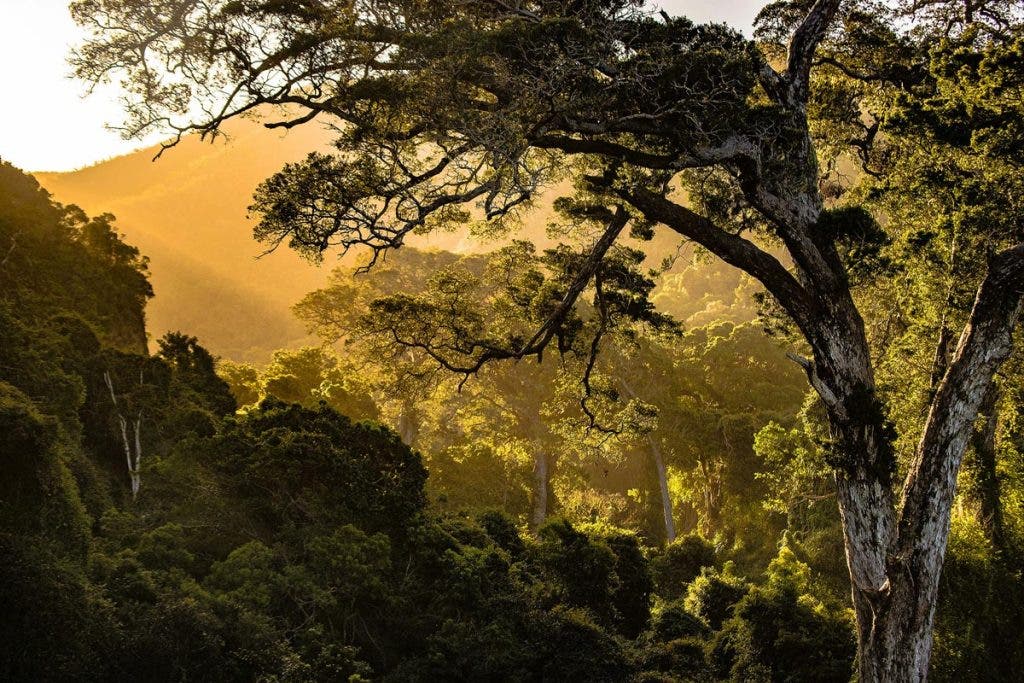
Try not to edit your photos too much and exaggerate colors and contrast. Overediting produces unrealistic effects and ruins the forest’s natural beauty. Forest photography requires just subtle adjustments with the only purpose of making the image look more like the scenery.
3. Understand the Impact of Light on Your Forest Photographs
Contrary to popular belief, the best light for forest photography is not the bright light of a sunny day. That’s because, on sunny days, the sun passes through the trees and produces bright areas that contrast with the darkness of the trees and the shaded areas underneath the foliage. The wide dynamic range that results is a stretch for most cameras and photographers. The strong sunlight will often result in a low of shadows from the trees landing on other trees, making everything a big mess.
Therefore, it is much better and less challenging for you to shoot on an overcast day or close to sunrise or sunset when the sun is low in the sky. Fog, mist, rain, or snow are welcome additions to your forest photography compositions.

However, if you do want to photograph a scene with high contrast, choose to underexpose the darker areas and set the exposure for the brightest area. It’s more likely to be able to recover details from an underexposed area than from an overexposed one. Furthermore, underexposed areas create a dramatic effect, while the overexposed ones are just obvious mistakes. If the sky is the brightest area of the scene, you may try using a polarizing filter to give it a little bit of contrast and color. However, in general, in forest photography, you would actually want to frame the composition so that you avoid having the sky in the shot at all.
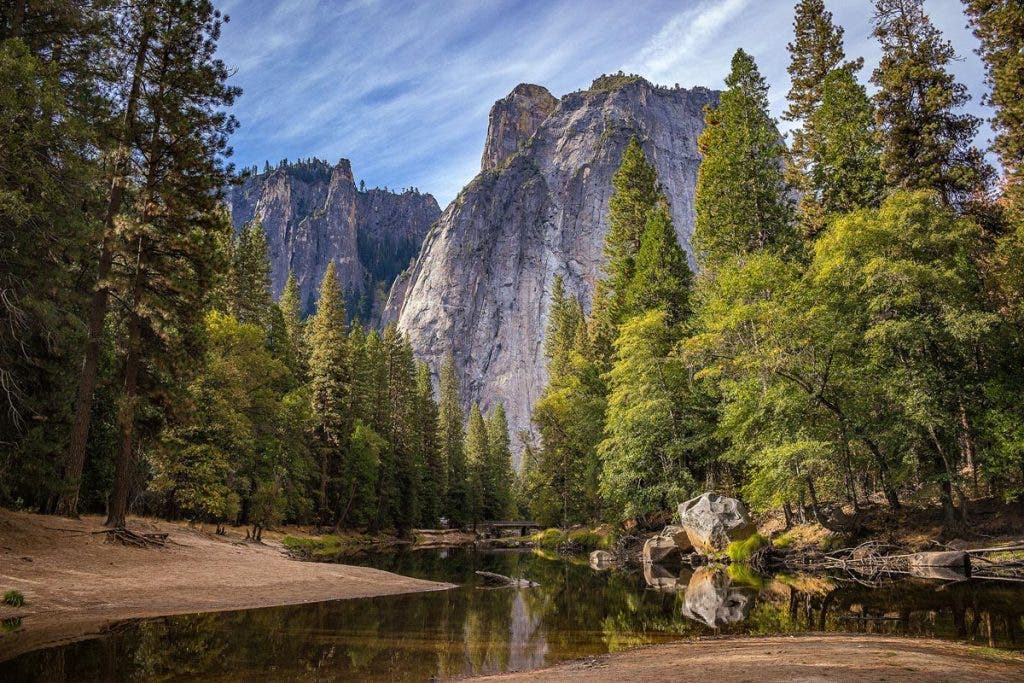
4. Experiment with Different Focal Lengths
Another misconception is that landscape photography and all its subgenres require a wide-angle lens. The truth is you first need to experiment with different focal lengths and only then decide on one or two that serve you better.
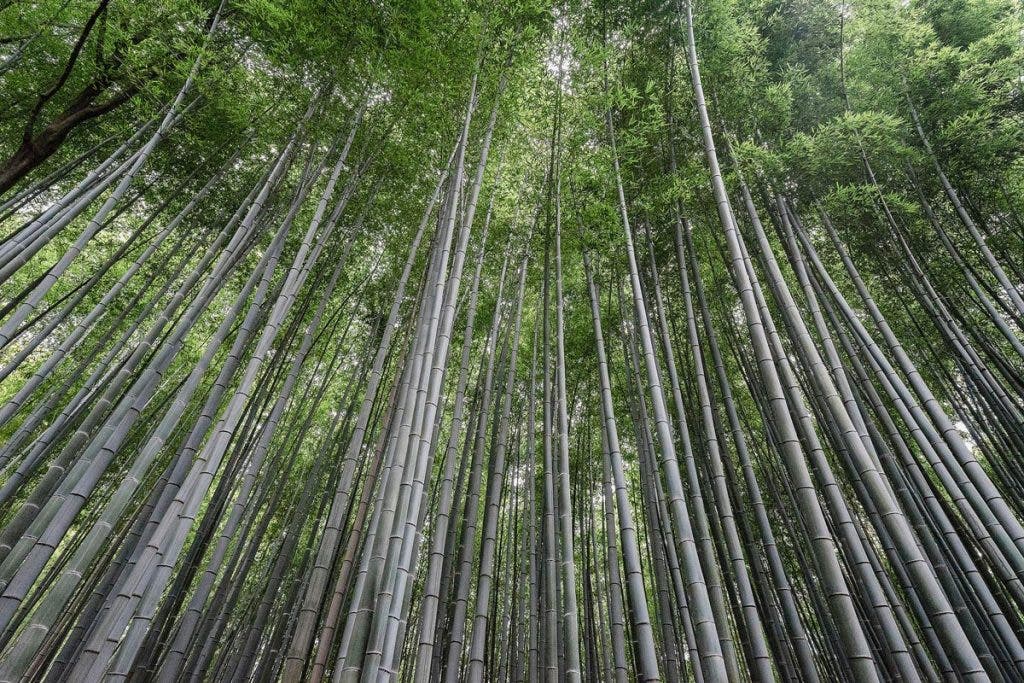
A wide-angle lens creates a wide perspective, frames more than the human eye can see, and produces a deep depth of field. It makes far-away objects look ever further away, and those close to the camera look even closer.
Try it for environmental shots of the forest, compositions aimed to emphasize the height of the trees, and multi-layer scenes. That is, something interesting happens both in the foreground and background. However, unless you are careful you end up emphasizing a big mess of different and old leaves. So I would generally avoid close to the ground shots with a wide angle lens.
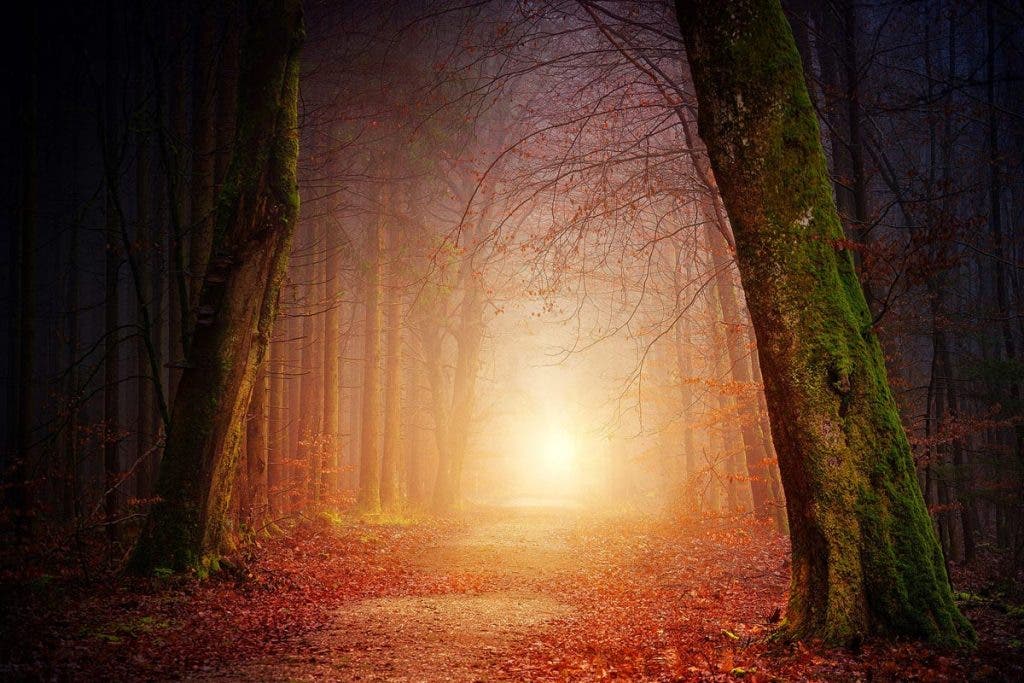
A telephoto lens creates a narrower perspective, frames less than the human eye can see, and produces a shallow depth of field. It makes objects look closer to the camera and helps you see far-away details. Try it for close-ups and detail shots with one main focal point, emphasizing clouds and leaves.
At the same time, you may try a standard 50mm lens that produces the closest perspective to the human eye and a macro lens to capture some of the tiniest wonders of the forest.
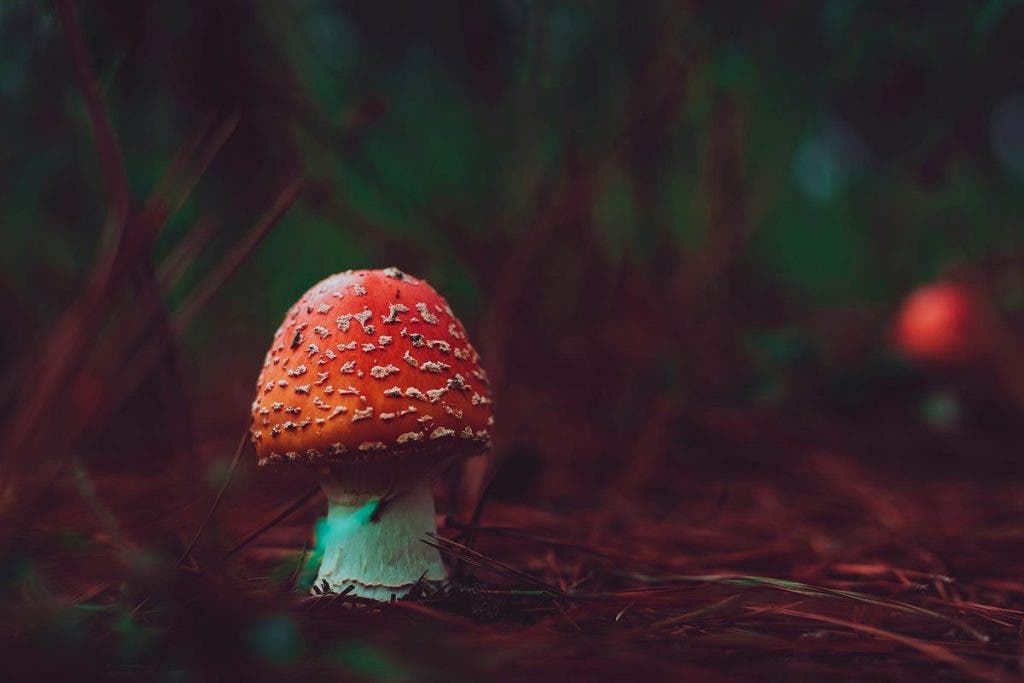
5. Be Aware of Leading Lines
Lines are the most frequent geometric shapes you’ll find in a forest. They influence your compositions more than you think. The obvious ones are the vertical tree trunks. Still, you may also find the horizon, fallen trees, long branches, and straight or winding forest paths. Don’t press the shutter release until you are sure of your framing, have checked where all the lines are going, and place the focal point in an advantageous position.
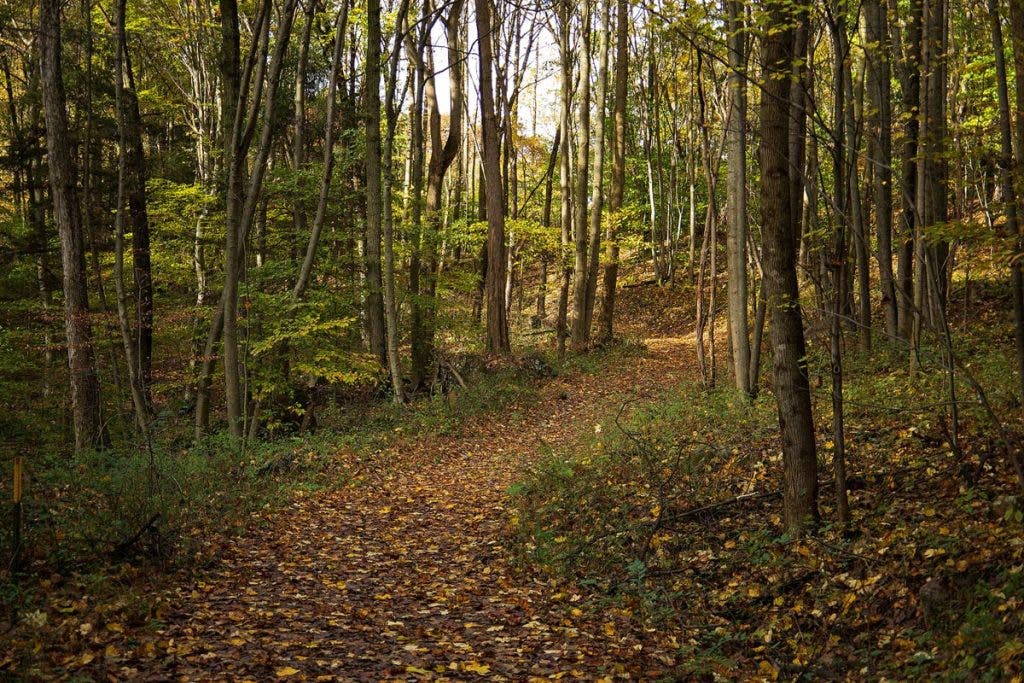
For example, it’s more appealing when a winding path starts in the bottom left corner of the frame and disappears into the horizon. It adds a sense of depth and conveys departures and melancholy. Place it in the middle of the frame, and it will create a separation between the two sides and lead the viewer through the frame quickly and with a different energy (e.g., like a running path). Straight lines are also quicker in leading the viewer out of the frame, which is why you want them across the longest dimension of the frame or a diagonal.
Vertical vs Horizontal
If you want to emphasize the trees’ height, compose your frame vertically. Align the tree trunks with the edges of the frame and place the camera as close to the ground as possible. On the other hand, if you want to emphasize the foliage, compose your frame horizontally and try to place the camera as close to it as possible.
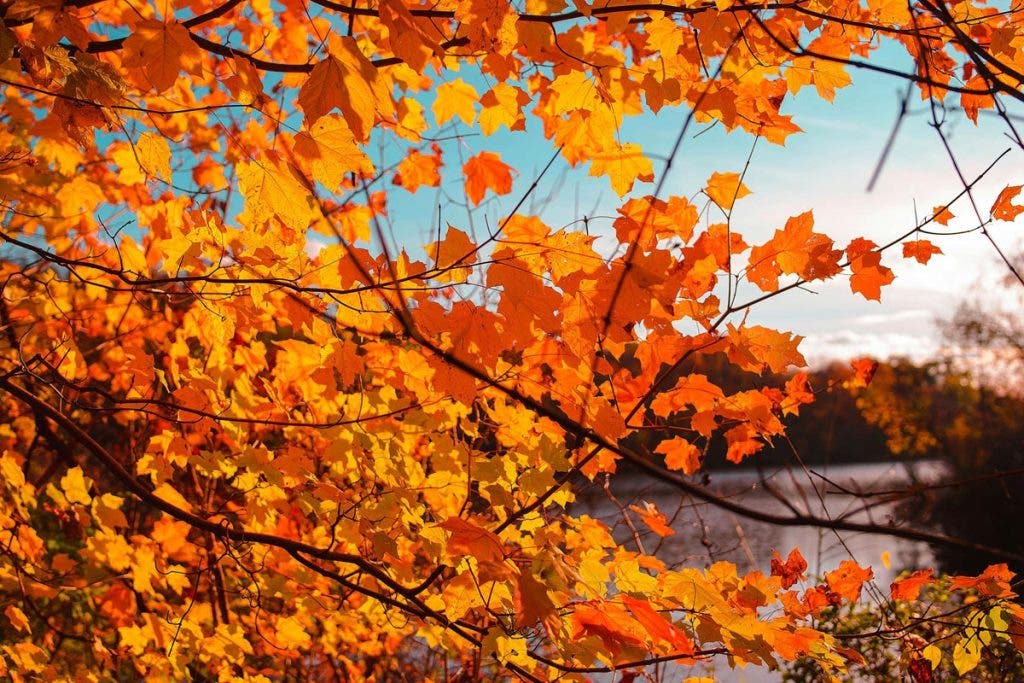
Ensure your composition has a focal point and that the lines in the frame lead to it. For example, you can lie on the ground, pointing the camera at the sky, and use the tree trunks as leading lines toward a blue patch of sky. Or you can use a thick and gnarled branch as a leading line toward a leaf bathing in the sun. Be creative, as the forest provides endless opportunities for you to do so.
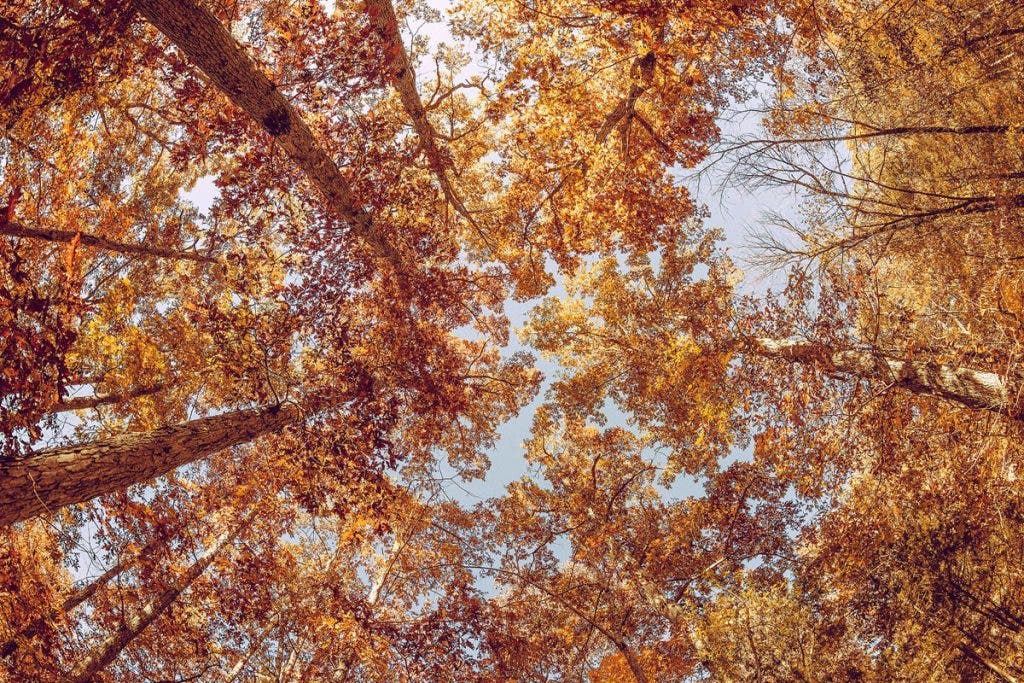
Conclusion
These forest photography tips are a good starting point for a beginner. You can find a forest near your home and visit it regardless of the season or weather forecast. Plenty of subjects await you patiently to practice camera settings, composition, and storytelling.
Try taking multiple photographs of the same scenery, changing camera settings and framing with each shot. Then, take some time to look at your photos, compare them, and see which one speaks to you more and captures your initial intention. In time, it will become second nature, and you’ll develop a personal workflow, enhancing your experience.
